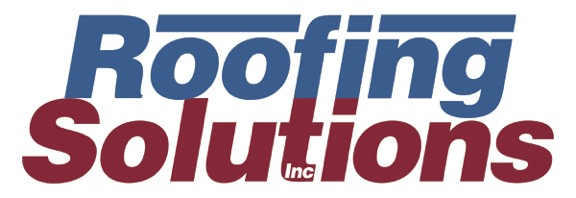What to Expect During a Commercial Roof Installation
Installing a new roof for your commercial building is a significant investment that requires careful planning and execution. Whether you’re replacing an old roof or installing a new one, understanding the steps involved in the process can help you prepare for what’s ahead. Here’s what you can expect during a commercial roof installation, from the initial consultation to the final inspection.
1. Initial Assessment and Consultation
Before the installation process begins, roofing contractors will conduct a thorough assessment of your building and existing roof. This includes:
- Inspection of Roof Condition: Contractors will examine the current roof to identify any underlying issues such as leaks, structural damage, or weakened materials.
- Evaluation of Roof Deck: The roof deck (the foundation of the roof) must be in good condition for proper installation. If the deck shows signs of wear, repairs may be necessary before proceeding.
- Material Selection: During this phase, you’ll discuss the best roofing material for your building. Options may include asphalt, metal, TPO, or EPDM, among others, depending on your budget, climate, and needs.
After the assessment, you’ll receive a detailed proposal, including cost estimates, timelines, and materials.
2. Permits and Approvals
In most cases, commercial roof installations require permits and approval from local authorities. Your roofing contractor will handle the paperwork, including obtaining permits and ensuring the installation complies with local building codes and regulations.
3. Roof Removal (If Applicable)
If you’re replacing an existing roof, the first step in the installation process is removing the old roofing materials. This may involve:
- Tear-Off: The existing roof covering is stripped down to the roof deck.
- Disposal: Old roofing materials will be carefully removed and disposed of, often requiring a dumpster on-site for safe and efficient waste management.
This step can be noisy and messy, but it’s necessary to prepare the building for the new roof.
4. Roof Deck Inspection and Repairs
Once the old roofing materials are removed, the roof deck will be inspected for any damage or deterioration. If any issues are found, such as rotting wood or water damage, repairs will be made before the new roof is installed. Proper repairs ensure a stable foundation for the new roof and help prevent future issues.
5. Installation of Underlayment and Flashing
The next step in the process is installing underlayment, which provides an extra layer of protection against moisture. Flashing, which is installed around edges, chimneys, vents, and other protrusions, helps prevent water from seeping into these vulnerable areas.
Flashing is an essential part of roof waterproofing, as it directs water away from these high-risk zones, reducing the chance of leaks.
6. Installation of New Roofing Material
Once the underlayment and flashing are in place, the roofing material itself is installed. The specific method of installation will depend on the material chosen:
- Asphalt Shingles: Shingles are laid down in overlapping rows, with each row secured with nails or staples.
- Metal Roofing: Metal panels are fastened to the roof with special clips or screws.
- TPO or EPDM Membranes: These single-ply roofing materials are rolled out and welded together to create a seamless waterproof surface.
The installation team will work systematically to ensure that the roofing material is applied correctly and securely.
7. Quality Control and Inspection
During and after the installation, quality control checks are conducted to ensure the roof is installed to the highest standards. This includes:
- Ensuring Proper Alignment: The roofing material is properly aligned and secured.
- Checking for Gaps: The contractor will look for any gaps or areas where the roof might be vulnerable to leaks.
- Confirming Proper Ventilation: Adequate roof ventilation is essential for maintaining the roof’s lifespan and preventing moisture buildup.
A thorough inspection ensures that the roof meets both your expectations and local building codes.
8. Final Inspection and Cleanup
After the roof is installed, the final inspection will take place to verify the work is complete and meets all specifications. Contractors will also:
- Clean the Site: All debris, nails, and old roofing materials will be removed.
- Check for Leaks: The roof is checked for any signs of leaks or water penetration.
The area around your building will be left clean and safe, ensuring minimal disruption to your business.
9. Warranty and Maintenance
Once the installation is complete, you’ll receive a warranty on the new roof, which covers both materials and workmanship. This warranty offers peace of mind, knowing that any issues that arise during the coverage period will be addressed at no additional cost.
Your roofing contractor will also provide recommendations for regular maintenance to keep your roof in top condition and prevent costly repairs down the line.
Final Thoughts
A commercial roof installation is a major project, but with proper planning and the right contractor, the process can go smoothly. By understanding the key steps involved—from the initial consultation to the final inspection—you can ensure that your new roof will provide reliable protection for your building for years to come.
If you’re planning a roof installation for your commercial property, contact a trusted roofing professional who can guide you through the process and ensure a successful outcome.
Ready To Take The Next Steps?
Fill Out The Form Below To Receive Your Free Estimate!
Contact Us Today!
Don't Take Our Word for It...
Let Our Work Speak for Itself!

Carlisle's Perfection Award
Carlisle's Perfection Award is presented to roofing applicator's with roof installation warranty claims that rank in the top 5% of all US and Canada. This shows the awarded applicators are providing exceptional service, and the installed roofs rarely are filed for a claim, ensuring customers they are working with a top-of-the line roofing company.

Carlisle's Perfection Council
Carlisle's Perfection Council chooses the most prestigious and highly rated roofing applicators to serve on an advisory board, which provides support roofing installers across the nation. This ensures applicator's are installing the highest quality roofing materials.

Carlisle's Execellence in Single-Ply
The Excellence in Single-Ply (ESP) award is deemed as one of the most prestigious awards in the roofing industry, assuring customers they are working with the most qualified and expert roofers.

Carlisle's Centurion Applicator
The Centurion Applicator award is presented to a roofing company that has achieved 100 'perfect 10' roof installs, meaning that an inspector gave a perfect score of '10' applying new roof systems.
